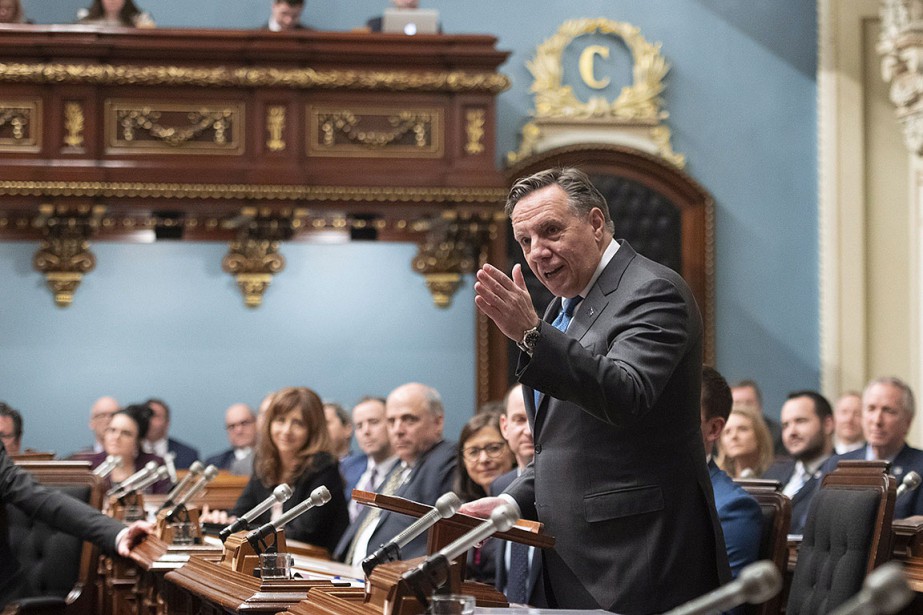Quebec has a schoolyard bully for a premier. Only François Legault’s targets aren’t children, they’re teachers. And public opinion is egging him on.
In his speech at the opening of the National Assembly session on Wednesday, the Coalition Avenir Québec premier reiterated his intention to forbid government employees “in positions of authority,” including teachers, from wearing religious symbols at work.
In principle, the prohibition would apply to judges, prosecutors, police and prison guards. It’s not known whether any of those in Quebec wear the symbols.
So, in practice, that leaves teachers, mostly Muslim women who wear the head scarf known as the hijab.
Legault claims support of a consensus in favour of a 2008 recommendation by the Bouchard-Taylor commission on religious accommodations.
In fact, the official Opposition Liberals have rejected the recommendation, and the Québec solidaire party is reconsidering its support for it.
And it would be more accurate to describe Legault’s position as Bouchard-Taylor plus teachers (who were not included in the commission’s proposed symbols ban), minus the Assembly crucifix (which the commission would have removed, but which Legault would keep), minus Charles Taylor (the co-commissioner who has repudiated the recommendation), minus Gérard Bouchard (the other co-commissioner, who has come out against Legault’s proposal).
Or as Legault’s narrower version of the “charter of values” proposed in 2013 by the then Parti Québécois government, which would have applied to all government employees.
Some opponents of the PQ charter believe Quebecers turned against it when they realized people would lose their jobs if they didn’t comply with it. In a 2013 Ipsos Reid-CTV News poll, 62 per cent of Quebecers were against firing government employees for that reason.
Since then, however, attitudes appear to have hardened. For the first time, poll results published this week suggest that Quebecers are predominantly in favour of firings.
In the Nov. 19-24 survey by CROP for Radio-Canada, 65 per cent agreed with including teachers in a symbols ban. And 49 per cent agreed with firing government employees who don’t comply, to 42 per cent who didn’t.
Previously, La Presse had suggested that Legault “extend a hand” to minorities, in a “grandfather” clause applying the ban only to new hires, and recognizing an acquired right of present employees to continue wearing symbols.
That would create two classes of government employees, and still give Quebec the dubious distinction of being the only jurisdiction in North America to discriminate officially against religious minorities in hiring for government jobs.
But at least the conditions under which present employees were hired would be respected. And discrimination against job applicants would be less visible than firings.
In the CROP-Radio-Canada poll, however, 57 per cent of Quebecers disagreed with applying the symbols ban only to new employees, to 35 per cent who agreed.
The poll results were all the encouragement Legault needed. With stiffened resolve, he took a hard line, bluntly telling reporters the day after the results were released that the ban will apply to teachers, and won’t exempt present employees. By threatening to remove minority teachers from the classroom, Smiling Frank made himself look tough on identity.
The next day, in his inaugural address, Legault said religious symbols are a question that “has been dragging on for more than 10 years.”
As the Bouchard-Taylor commission reported, however, the “problem” of accommodating minority religions, especially Islam, is mostly a creation of the province’s dominant Québecor media empire.
Now, to solve that theoretical problem, Quebec’s populist premier would create actual ones. He would force teachers to choose between their religious beliefs and their chosen profession. He would exacerbate divisions and tensions in Quebec, and perhaps between French Quebec and English Canada.
And he probably wouldn’t even settle the symbols question. To override constitutional protection of freedom of religion, he would probably have to use a “notwithstanding” clause. And such a clause must be renewed after five years.




































